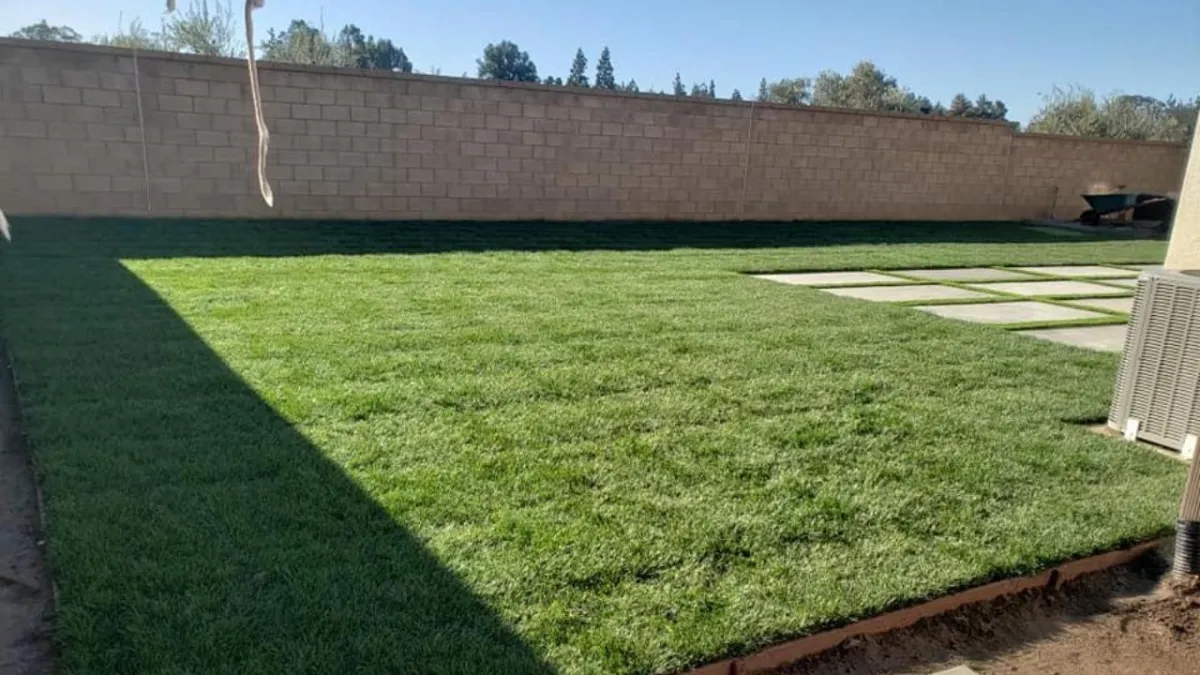BLOGS

Want the Perfect Yard? Expert Tips for a Natural Landscape
Landscaping a natural landscape starts with thoughtful planning, including developing a master plan and selecting native plants that thrive in your environment. Focus on design principles like balance and focal points, create distinct outdoor areas for various activities, and incorporate low-maintenance strategies such as using mulch and ground covers. Additionally, embrace the natural evolution of your landscape while ensuring all elements harmonize with the surroundings.
To help you get started on your journey toward the perfect yard, we’ve gathered expert landscaping tips that focus on creating a natural landscape. These tips take into account local climate conditions, sustainable practices, and timeless design principles to ensure that your outdoor space not only looks great but also flourishes year-round.
At Ultimate Landscape & Tree Service, we’ve been turning our client’s landscaping dreams into reality for over a decade. With our extensive services, including landscaping construction, tree care, irrigation, planting, and yard cleanups, we specialize in transforming your outdoor space into something spectacular. Let’s check into some expert tips to help you achieve the perfect natural landscape for your yard.
Key Takeaways
Create a cohesive master plan for your yard, considering both aesthetics and functionality.
Choose native plants that thrive in your local climate and require minimal maintenance.
Incorporate layering and diversity to create visual interest and ensure year-round beauty.
Use basic design principles like balance and proportion for a harmonious landscape.
Design specific outdoor areas (like dining or relaxation spots) connected by pathways or visual features.
Implement low-maintenance strategies to reduce upkeep, such as mulch and ground covers.
Keep in mind the natural processes and changes in your landscape for long-term success.
Add final touches like unique plant arrangements or hardscaping elements to create focal points.
The Benefits of Native Plants in Landscaping
Native plants are vital to creating sustainable, low-maintenance landscapes. By choosing plants that naturally thrive in your region, you can reduce water usage, avoid chemicals, and support local wildlife. Here’s why you should prioritize native plants for your garden:
Water Conservation: Native plants are adapted to local rainfall patterns, requiring less water compared to non-native species.
Pest Resistance: These plants are naturally resistant to local pests and diseases, reducing the need for pesticides.
Support for Wildlife: Native plants provide habitats for local birds, insects, and pollinators.
Low Maintenance: With proper selection, native plants thrive with minimal care, saving you time and effort.
Year-Round Vibrancy: Many native plants offer continuous seasonal interest, ensuring your landscape looks beautiful year-round.
Understanding Soil Types for Better Plant Growth
Soil quality is critical to a thriving garden. Different plants have different soil preferences, and understanding your soil type is key to making informed plant choices. Here’s how soil affects your garden’s success:
Soil Test: Conducting a soil test helps determine pH levels and nutrient content, allowing for targeted amendments.
Clay vs. Sandy Soil: Clay-heavy soil retains moisture but may lack drainage, while sandy soil drains quickly but may need extra nutrients.
Amendments: Adding compost, mulch, or sand can improve soil structure and promote healthy plant roots.
Moisture Retention: Well-drained soil prevents waterlogging and promotes deeper root growth, leading to stronger plants.
Customized Plant Selection: Knowing your soil type ensures you choose plants that will flourish in your yard’s unique conditions.
Creating Outdoor Rooms: Design with Purpose
Dividing your yard into functional "rooms" allows for a more organized, purposeful design. These outdoor spaces can serve specific needs while enhancing the overall appeal of your garden. Here’s how to create well-defined outdoor rooms:
Functionality: Assign each room a distinct purpose, such as dining, lounging, or gardening.
Pathways: Use walkways or borders to separate rooms and guide movement through the space.
Focal Points: Add unique features like fire pits, fountains, or sculptures to draw attention to specific areas.
Variety in Materials: Incorporate different materials such as wood, stone, or gravel for texture and contrast.
Consider Flow: Ensure that each "room" flows seamlessly into the next, providing easy access and a cohesive feel.
Low-Maintenance Landscaping Ideas for Busy Homeowners
For homeowners who desire a beautiful garden but lack time for upkeep, low-maintenance landscaping is a perfect solution. Here are strategies to enjoy a gorgeous yard without the heavy lifting:
Ground Covers: Replace traditional lawns with low-maintenance ground covers that require less watering and mowing.
Drought-Tolerant Plants: Choose plants that thrive in dry conditions, reducing the need for constant irrigation.
Mulching: Use mulch around plants to retain moisture, suppress weeds, and add aesthetic appeal.
Smart Irrigation: Install efficient irrigation systems, such as drip irrigation, to conserve water and reduce manual watering.
Less Fertilizing: Select plants that require minimal fertilization to keep your yard healthy with less effort.
Incorporating Water Features into Your Landscape Design
Water features are a serene addition to any garden, bringing both visual appeal and calming sounds to your outdoor space. Here's how to seamlessly integrate water features into your landscape:
Types of Water Features: Choose from fountains, ponds, birdbaths, or waterfalls based on the space available and desired impact.
Wildlife Attraction: Water features draw birds, butterflies, and other wildlife, enhancing biodiversity in your landscape.
Sound Benefits: The soothing sound of running water can mask noise pollution and create a peaceful ambiance.
Size Consideration: Make sure the water feature matches the scale of your garden to maintain balance and avoid overwhelming the space.
Maintenance: Choose low-maintenance options, such as self-contained fountains or ponds with built-in filtration systems, for easy upkeep.
Frequently Asked Questions About Landscaping
What is the best time to start landscaping in Fresno, CA? The best time to start landscaping in Fresno is during the spring or fall. These seasons offer mild temperatures, making it easier to plant and establish new growth before the extreme heat of summer or winter.
How can I maintain a healthy lawn in Fresno's hot climate? In Fresno's hot climate, maintaining a healthy lawn involves regular watering early in the morning, mowing at the proper height, and using drought-tolerant grass varieties. Mulching can also help retain moisture in the soil.
How do I reduce water usage in my landscaping in Fresno? To reduce water usage in your landscaping, opt for drought-tolerant plants, use efficient irrigation systems like drip irrigation, and mulch around plants to retain moisture.
Contact Us for Landscaping Services in Fresno, CA
Ready to transform your yard into a beautiful, sustainable landscape? At Ultimate Landscape & Tree Service, we offer expert landscaping services, tree care, and more. Serving Fresno, Sanger, Hanford, and surrounding areas, we're here to help bring your vision to life. Contact us today to get started!

Contact Us
Monday - Friday: 9am - 5pm
Saturday: Closed
Sunday: Closed
Connect With Us
Financing Available
© 2025 Ultimate Landscape & Tree Service LLC. All Rights Reserved. Privacy Policy. Terms & Conditions. Web Design By Fused Media.
